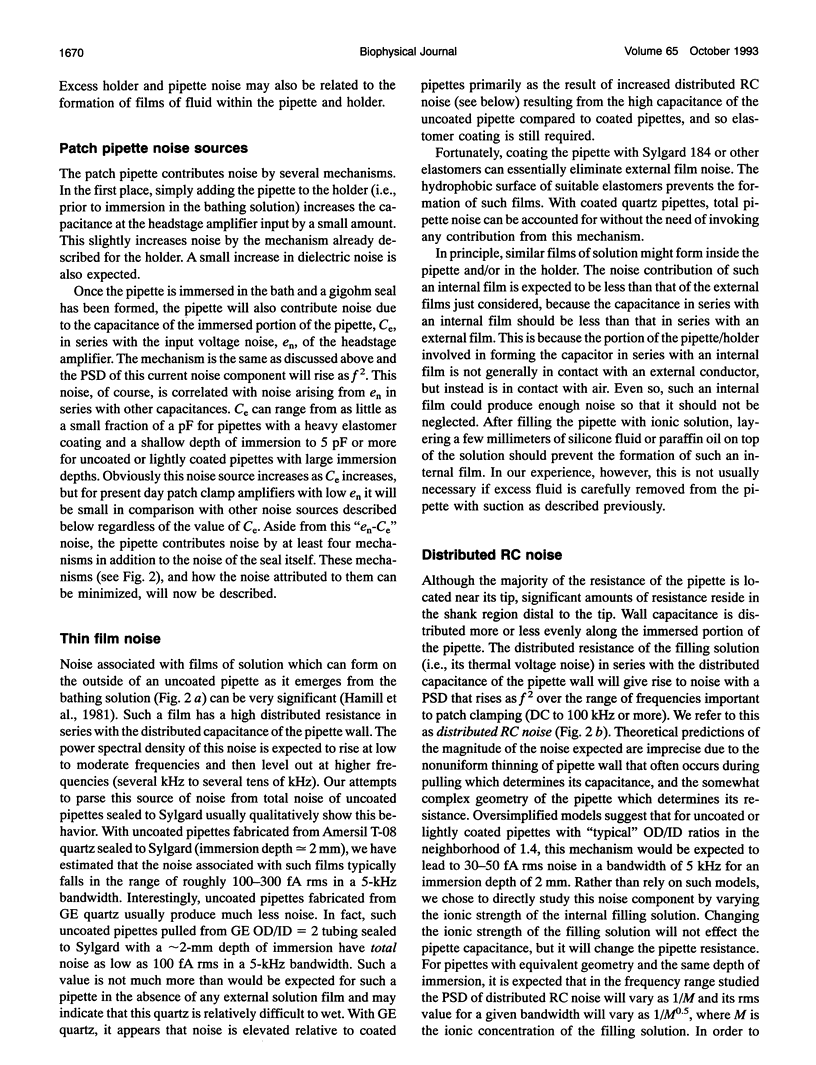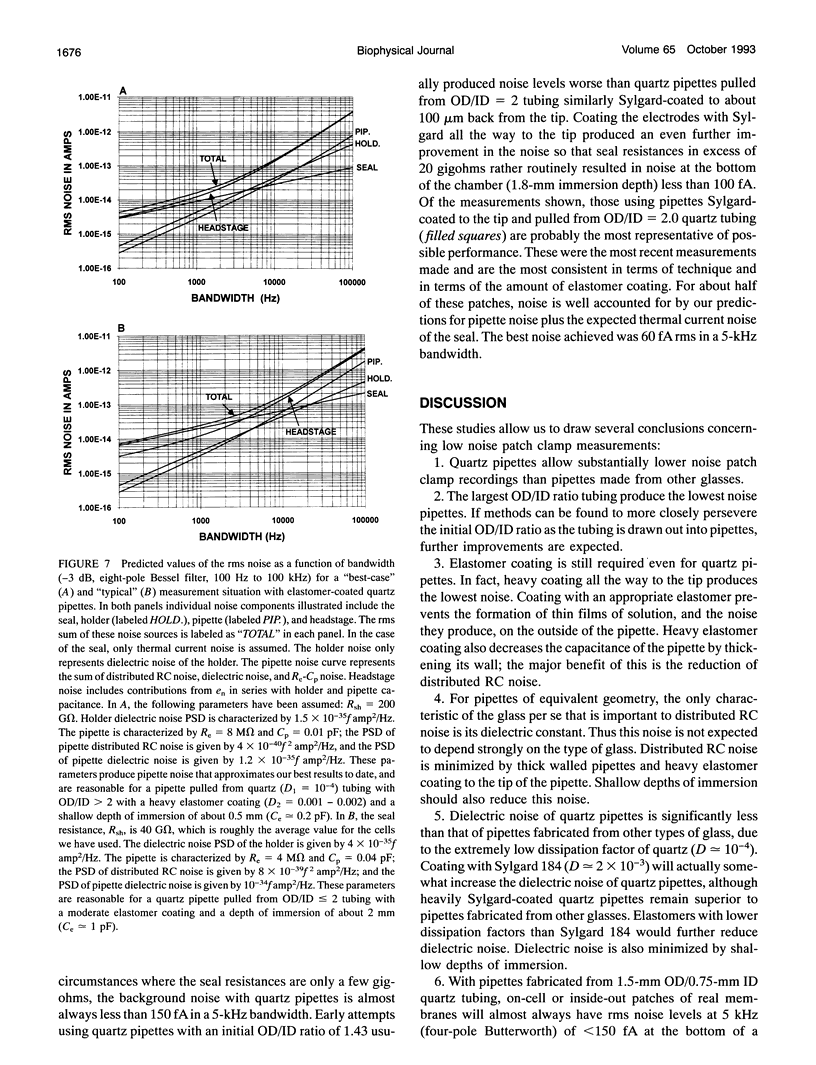Abstract
Quartz has a dissipation factor of approximately 10(-4), which is an order of magnitude less than that of the best glasses previously used to fabricate patch pipettes; it's dielectric constant of 3.8 is also lower than that of other glasses. On the basis of these electrical characteristics it is expected that patch pipettes pulled from quartz tubing will produce significantly less noise than pipettes made from other glasses. Our work confirms these expectations and we describe theoretical and practical aspects of the use of quartz pipettes for single channel patch voltage clamp measurements. Methods for pulling quartz pipettes with a laser-based puller and coating them with low-loss elastomers are discussed, as are precautions that are necessary to achieve low noise recordings. We have shown that quartz pipettes can be pulled from tubing with outer diameter to inner diameter ratios as large as 3 and a method of applying heavy elastomer coatings all the way to the tip of pipettes is presented. Noise sources arising from the pipette and its holder are described theoretically, and it is shown that measured noise is in good agreement with such predictions. With low noise capacitive feedback electronics, small geometry holders, and thick-walled quartz pipettes coated with low-loss elastomers we have been routinely able to achieve noise of 100 fA rms or less in a 5-kHz bandwidth with real cell patches and a pipette immersion depth of approximately 2 mm. On occasion we have achieved noise as low as 60 fA rms in this bandwidth.
Full text
PDF











Images in this article
Selected References
These references are in PubMed. This may not be the complete list of references from this article.
- Hamill O. P., Marty A., Neher E., Sakmann B., Sigworth F. J. Improved patch-clamp techniques for high-resolution current recording from cells and cell-free membrane patches. Pflugers Arch. 1981 Aug;391(2):85–100. doi: 10.1007/BF00656997. [DOI] [PubMed] [Google Scholar]
- Levis R. A., Rae J. L. Constructing a patch clamp setup. Methods Enzymol. 1992;207:14–66. doi: 10.1016/0076-6879(92)07004-8. [DOI] [PubMed] [Google Scholar]
- Rae J. L., Levis R. A. Glass technology for patch clamp electrodes. Methods Enzymol. 1992;207:66–92. doi: 10.1016/0076-6879(92)07005-9. [DOI] [PubMed] [Google Scholar]
- Rae J. L., Levis R. A. Patch Clamp Recordings from the Epithelium of the Lens Obtained using Glasses Selected for Low Noise and Improved Sealing Properties. Biophys J. 1984 Jan;45(1):144–146. doi: 10.1016/S0006-3495(84)84142-9. [DOI] [PMC free article] [PubMed] [Google Scholar]




